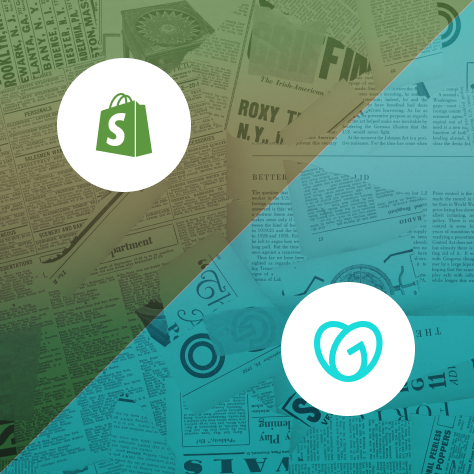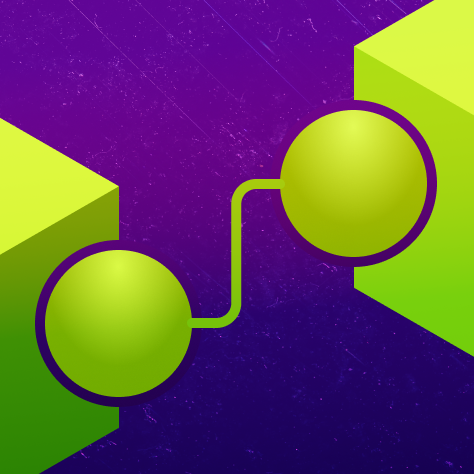Shopify Flow Essentials: Building Powerful Automation Workflows
Running an ecommerce store involves many daily tasks—some important, some repetitive. As a store grows, so does the volume of work behind the scenes. Managing orders, updating inventory, tagging customers, and sending notifications can take up time that could be spent elsewhere. In fact, 93% of e-commerce businesses view AI agents as a competitive advantage, highlighting the strategic importance of automation technology.
Automation tools help handle these recurring tasks. For Shopify users, one of the main tools for this is Shopify Flow. Brands using Shopify Flow report 40-60% reduction in manual tasks, significantly improving operational efficiency. This article explains what Shopify Flow is, how it works, and how to use it effectively.
Automation tools help handle these recurring tasks. For Shopify users, one of the main tools for this is Shopify Flow. Companies earn $5.44 for every $1 spent on marketing automation, representing a 544% ROI. This article explains what Shopify Flow is, how it works, and how to use it effectively.
What Is Shopify Flow
Shopify Flow is an automation tool built by Shopify that lets store owners create workflows to handle repetitive tasks automatically. These workflows follow a simple pattern: when something happens in your store (trigger), if certain conditions are met (condition), then an action happens automatically.
For example, when a customer places an order over $100, Shopify Flow can automatically tag them as a "VIP customer" without you having to do anything manually. This happens behind the scenes while you focus on other aspects of your business.
Shopify Flow is available on all paid Shopify plans, with some advanced features reserved for Shopify Plus merchants.
- Time-saver: Shopify Flow handles routine tasks automatically, freeing you up for more important work
- Error reducer: Automated workflows eliminate human error in repetitive processes
- Scalability helper: As your store grows, Flow keeps operations running smoothly without adding staff
How Does Shopify Flow Work
Shopify Flow uses a trigger-condition-action model that's easy to understand even if you're not tech-savvy. Think of it as a simple "if this happens, then do that" system.
Every workflow starts with a trigger—an event that happens in your store like a new order or customer signup. Next comes the condition, which is a rule that decides whether the workflow continues. If the condition is met, the action occurs automatically.
A Trigger starts the workflow — for example, when a new order is placed. A Condition defines when the workflow should act, such as if the order total is greater than $100. Finally, an Action is what happens as a result — like tagging the customer as "VIP".
This three-part structure makes Shopify Flow (also called "flow shopify" or "shopify app flow" by some users) flexible enough to handle many different store operations without requiring any coding knowledge.
Steps To Set Up Your First Shopify Flow Workflow
Setting up your first workflow in the Shopify Flow app is straightforward. Here's how to do it:
1. Install The Shopify Flow App
Start by adding the app to your store. Go to the Shopify App Store, search for "Shopify Flow," and click "Add app." After installation, you'll find it in your admin dashboard under "Apps."
2. Choose A Trigger
In the Shopify Flow app, click "Create workflow" and select what will start your automation. Common triggers include:
- New order placed
- Product created or updated
- Customer account created
- Inventory levels changed
- Cart abandoned
The trigger is the event that sets everything in motion, so choose one that happens regularly in your store operations.
3. Add Conditions
After selecting a trigger, decide when the workflow should continue. Conditions act as filters, making sure the action only happens in specific situations:
- Order value above or below a certain amount
- Customer from a specific country
- Product belonging to a certain collection
- Item quantity reaching a threshold
- Order using a particular payment method
You can skip this step if you want the action to happen every time the trigger occurs.
4. Configure Actions
Now choose what happens when your conditions are met. Actions are the automated tasks that Flow performs:
- Tag a customer or order
- Send an email notification
- Add a note to an order
- Hide or show a product
- Create a draft order
Actions save you time by handling tasks that would otherwise require manual work.
5. Test And Activate
Before turning on your workflow, use the "Test" button to make sure it works correctly. Once you're satisfied, click "Turn on workflow" to activate it. Your workflow will now run automatically whenever the trigger event happens and conditions are met.
Key Shopify Flow Automations For Ecommerce
The shopify automation platform can handle many different tasks. Here are some of the most useful ways to use Shopify Flow in your store:
Inventory And Stock Updates
Keep your inventory management running smoothly with automations that monitor stock levels:
- Get notified when products fall below a specific quantity
- Automatically hide out-of-stock items from your storefront
- Tag products that need reordering when inventory gets low
These automations help prevent stockouts and save you from constantly checking inventory levels manually.
Fraud Monitoring
Protect your store from fraudulent orders with workflows that flag suspicious activity:
- Automatically tag orders with mismatched billing and shipping addresses
- Get alerts for unusually large orders from new customers
- Put high-risk orders on hold for review before fulfillment
These safeguards add an extra layer of security to your order processing system.
Customer Tagging
Segment your customers automatically based on their buying behavior:
- Tag first-time buyers to welcome them properly
- Identify repeat customers for loyalty programs
- Label high-value customers for VIP treatment
These tags make it easier to send targeted marketing and provide personalized service.
Loyalty Program Triggers
Support your customer loyalty efforts with automated workflows:
- Award points when customers reach spending thresholds
- Send special offers on a customer's purchase anniversary
- Trigger thank-you emails after milestone purchases
These automations make customers feel valued without requiring manual tracking.
Using Templates And Quick Start Tips
You don't have to build workflows from scratch. Shopify Flow includes templates for common automations that you can customize for your store.
1. Browse Template Library
In the Flow app, click on "Templates" to see pre-built workflows for popular use cases:
- Tag high-value orders
- Send low inventory alerts
- Welcome new customers
- Flag potential fraud
These templates give you a head start and show how effective workflows are structured.
2. Customize With Your Conditions
After selecting a template, adjust it to fit your specific needs:
- Change the dollar amount that defines a "high-value" order
- Set your own inventory thresholds for alerts
- Modify the tags applied to customers or orders
- Add extra conditions to make the workflow more precise
These customizations ensure the template works for your unique business requirements.
3. Test And Refine
Before activating any workflow, test it to make sure it behaves as expected:
- Use the "Test" button to see what would happen with sample data
- Make adjustments if the results aren't what you want
- Start with simple workflows before creating complex ones
Testing helps avoid unexpected results when your workflow goes live.
Best Practices For Shopify Automation Platform
To get the most out of Shopify Flow, follow these practical guidelines:
1. Start Simple
Begin with basic workflows that address your most common repetitive tasks. Once you're comfortable with how Flow works, you can create more complex automations.
A good first workflow might be tagging customers who spend over a certain amount or getting notified when inventory runs low on popular products.
2. Monitor And Iterate
After activating a workflow, check how it's performing regularly. Look at the results and make adjustments as needed to improve its effectiveness.
The "History" tab in the Flow app shows you when workflows have run and what actions they've taken, making it easy to spot any issues.
3. Combine With Other Apps
Shopify Flow works with many other apps in the Shopify ecosystem. Connect it to your email marketing, inventory management, or customer service tools to create even more powerful automations.
For example, a workflow could trigger an email campaign in your marketing app when a customer makes their third purchase.
Frequently Asked Questions
How much does Shopify Flow cost to use?
Shopify Flow is included at no extra cost with all paid Shopify plans. Some advanced features are only available to Shopify Plus merchants.
Can Shopify Flow integrate with third-party apps?
Yes, Shopify Flow connects with many third-party apps through built-in connectors, allowing your workflows to interact with tools across your tech stack.
How many workflows can I create in Shopify Flow?
There's no limit to the number of workflows you can create in Shopify Flow, so you can automate as many processes as needed.
Growing Your Store With Continuous Automation
Automating routine tasks with Shopify Flow gives you more time to focus on growing your business. Instead of manually tagging customers, updating inventory, or sending notifications, you can let these processes run in the background while you concentrate on strategy and customer relationships.
The best approach is to start with a few key workflows and gradually add more as you identify repetitive tasks that could be automated. Over time, these small efficiencies add up to significant time savings and more consistent operations.
At Platter, we believe in making small, ongoing improvements to your Shopify store rather than expensive overhauls. Our customizable theme and app work alongside tools like Shopify Flow to create a more efficient, profitable storefront without requiring technical expertise.
Like Shopify Flow, Platter's solutions focus on empowering store owners to take control of their business operations with user-friendly tools that deliver real results. Whether you're using flow shopify for basic automations or building complex workflows on the shopify automation platform, the goal is the same: a more efficient, profitable store.
To see how Platter can complement your Shopify Flow automations and further optimize your storefront, book a demo today.






-min.webp)




.webp)



















.svg)


.svg)











.png)

%201.png)



.svg)
.svg)
